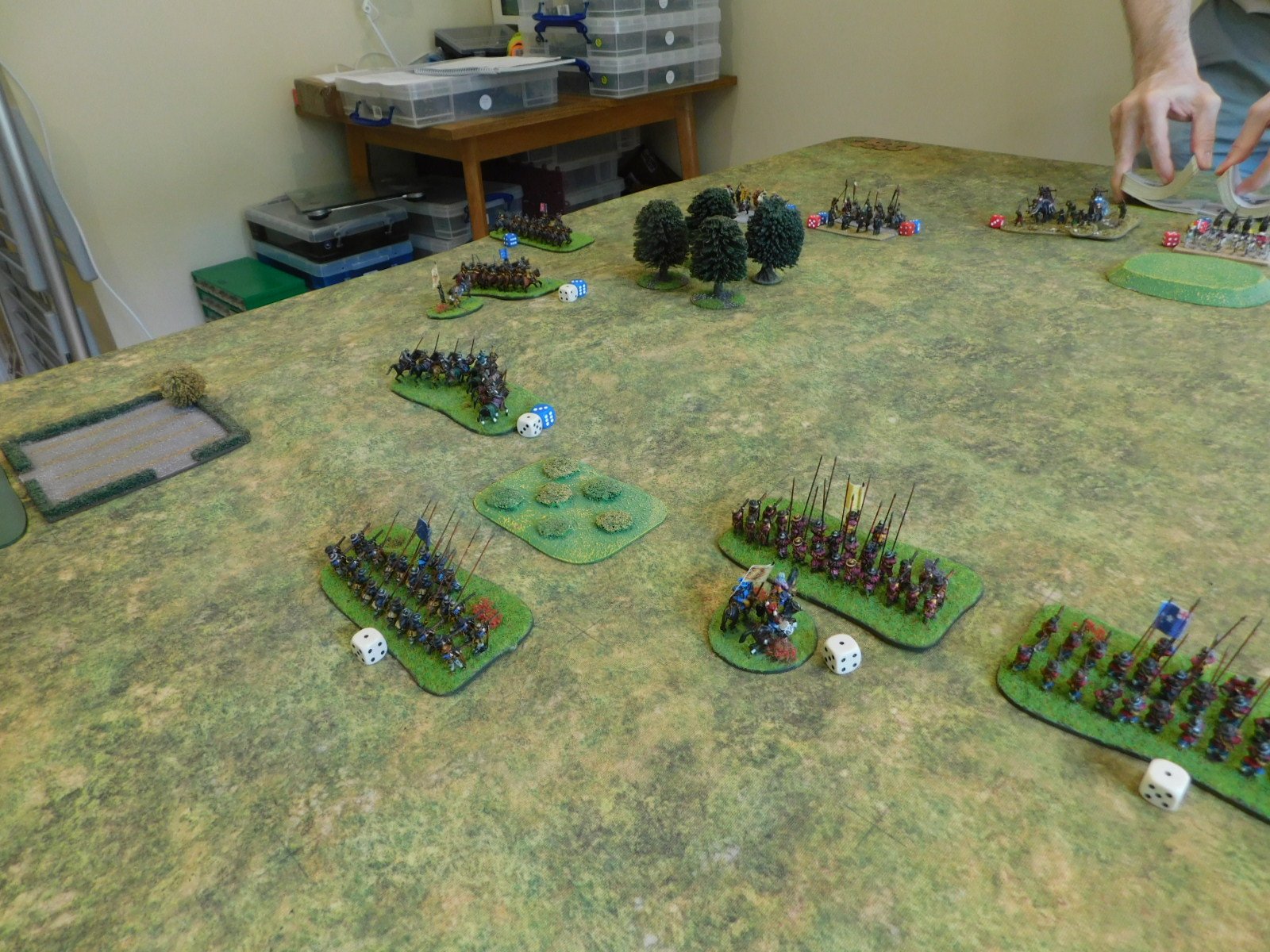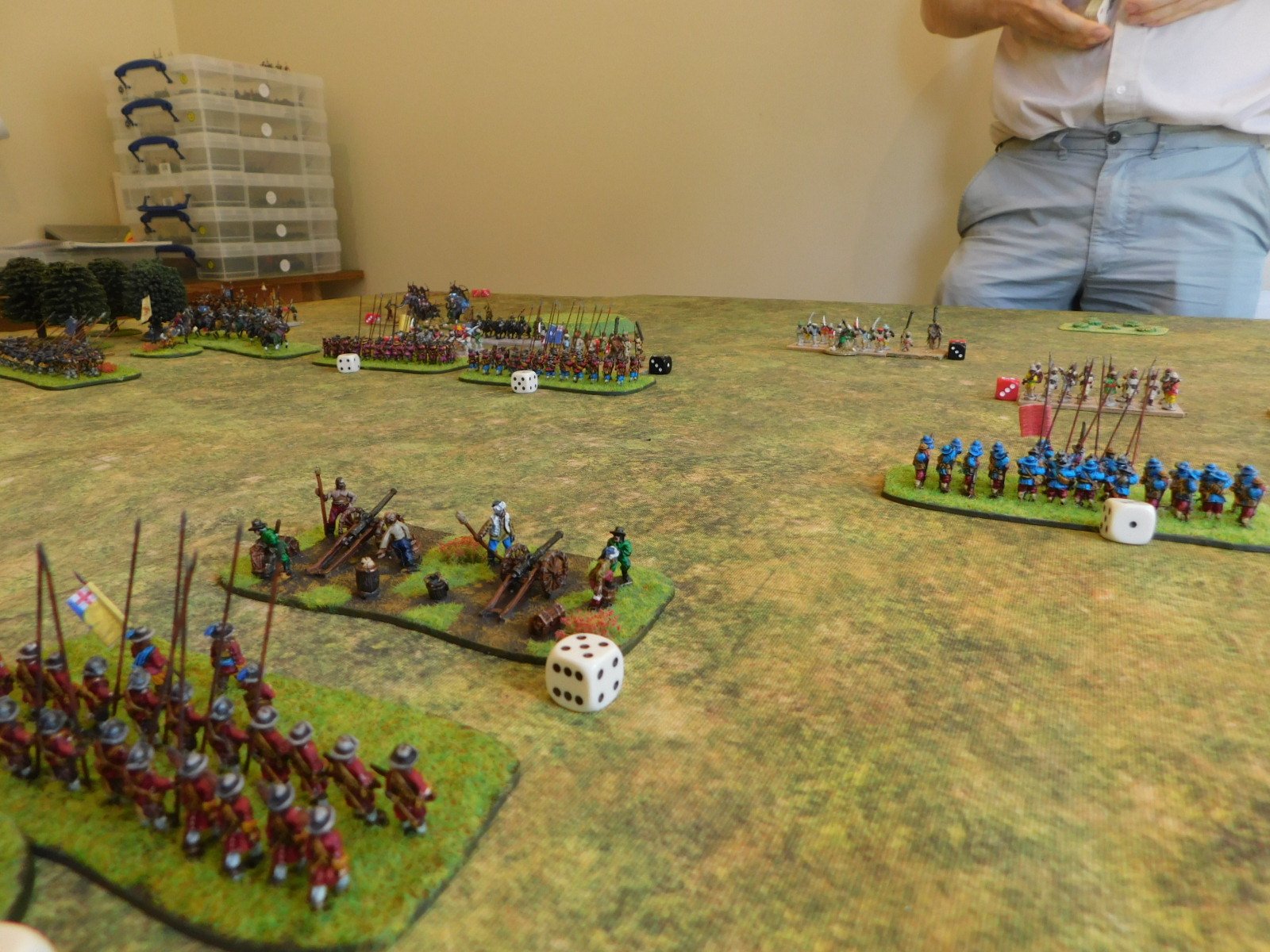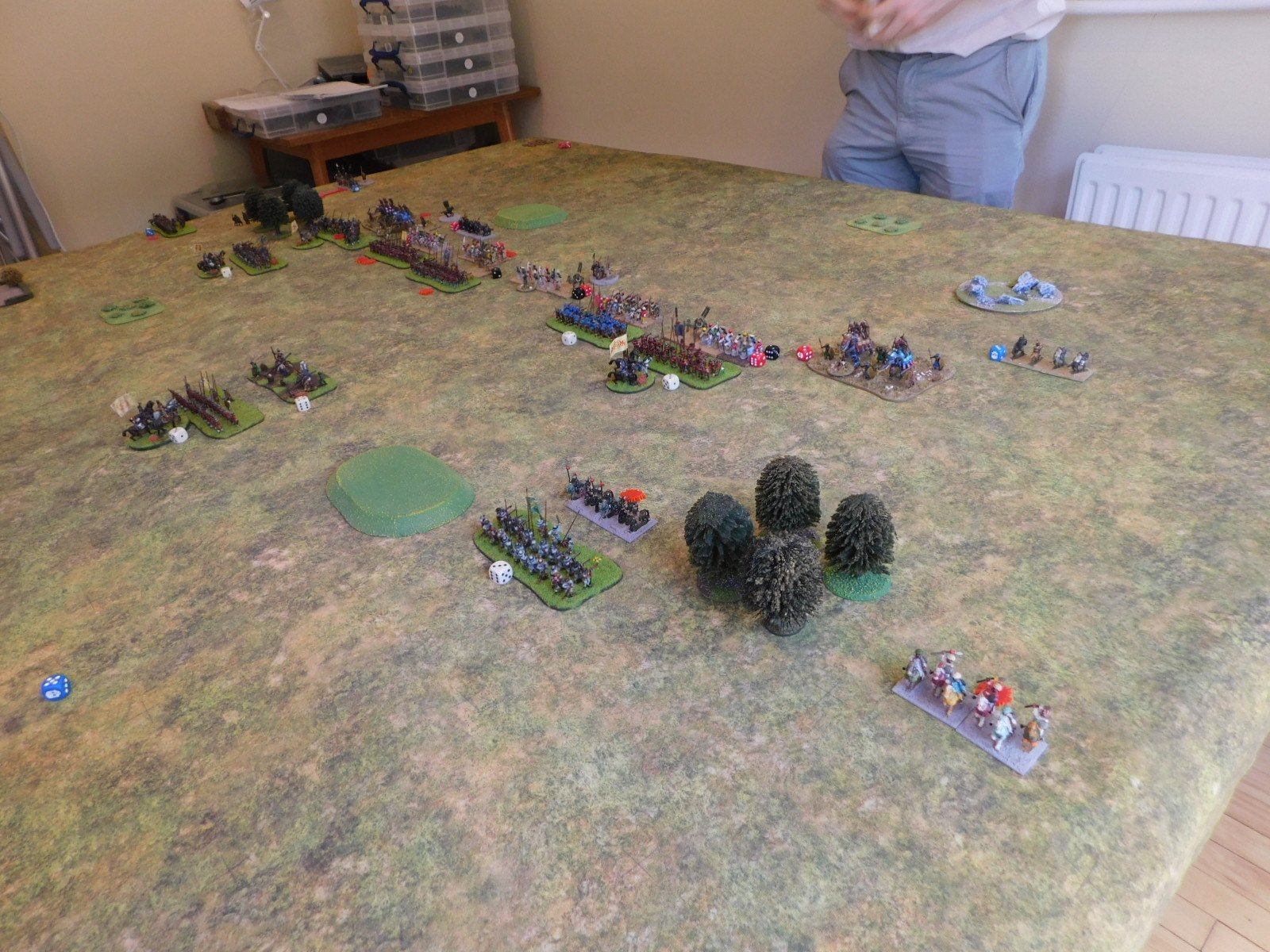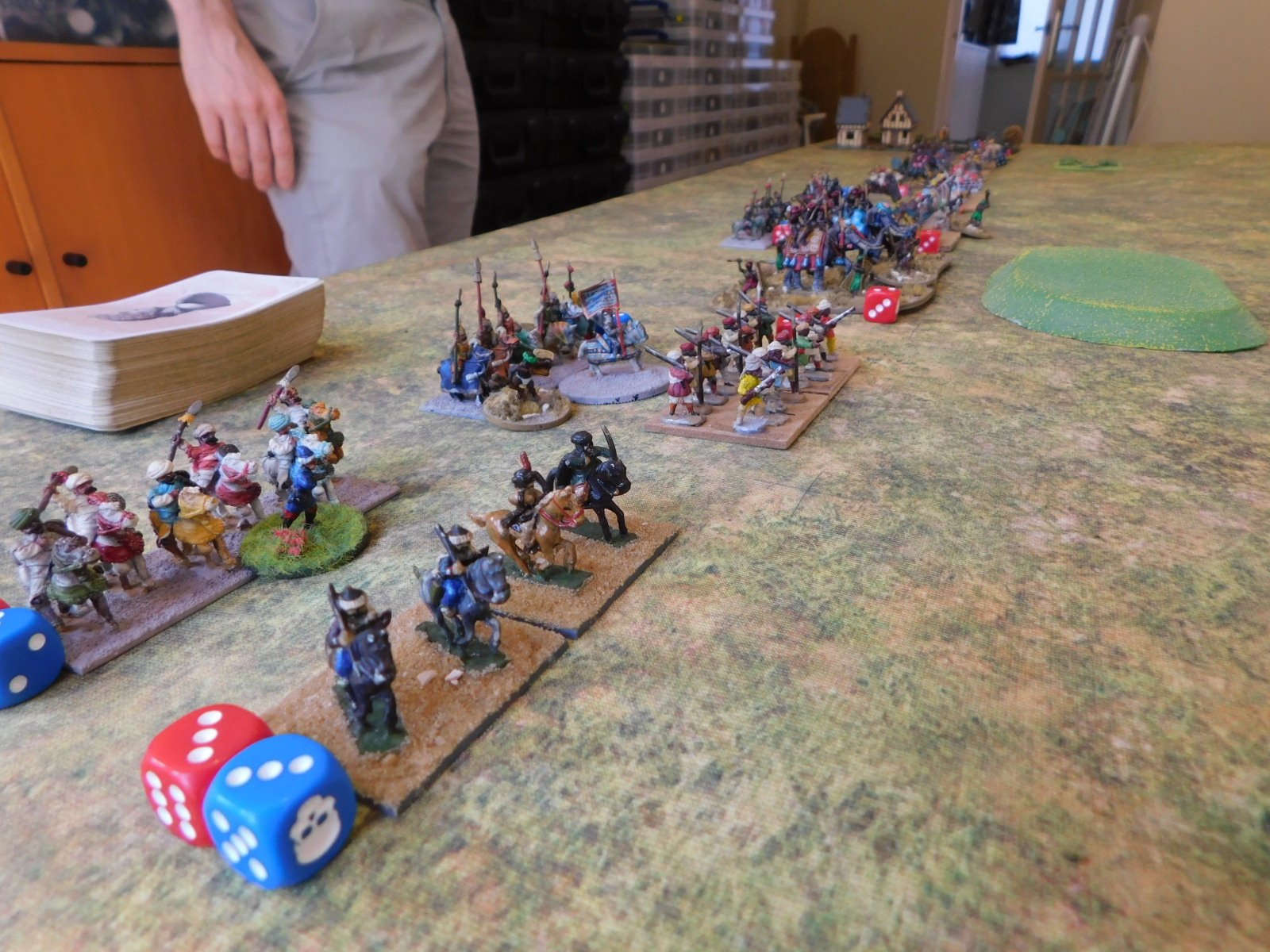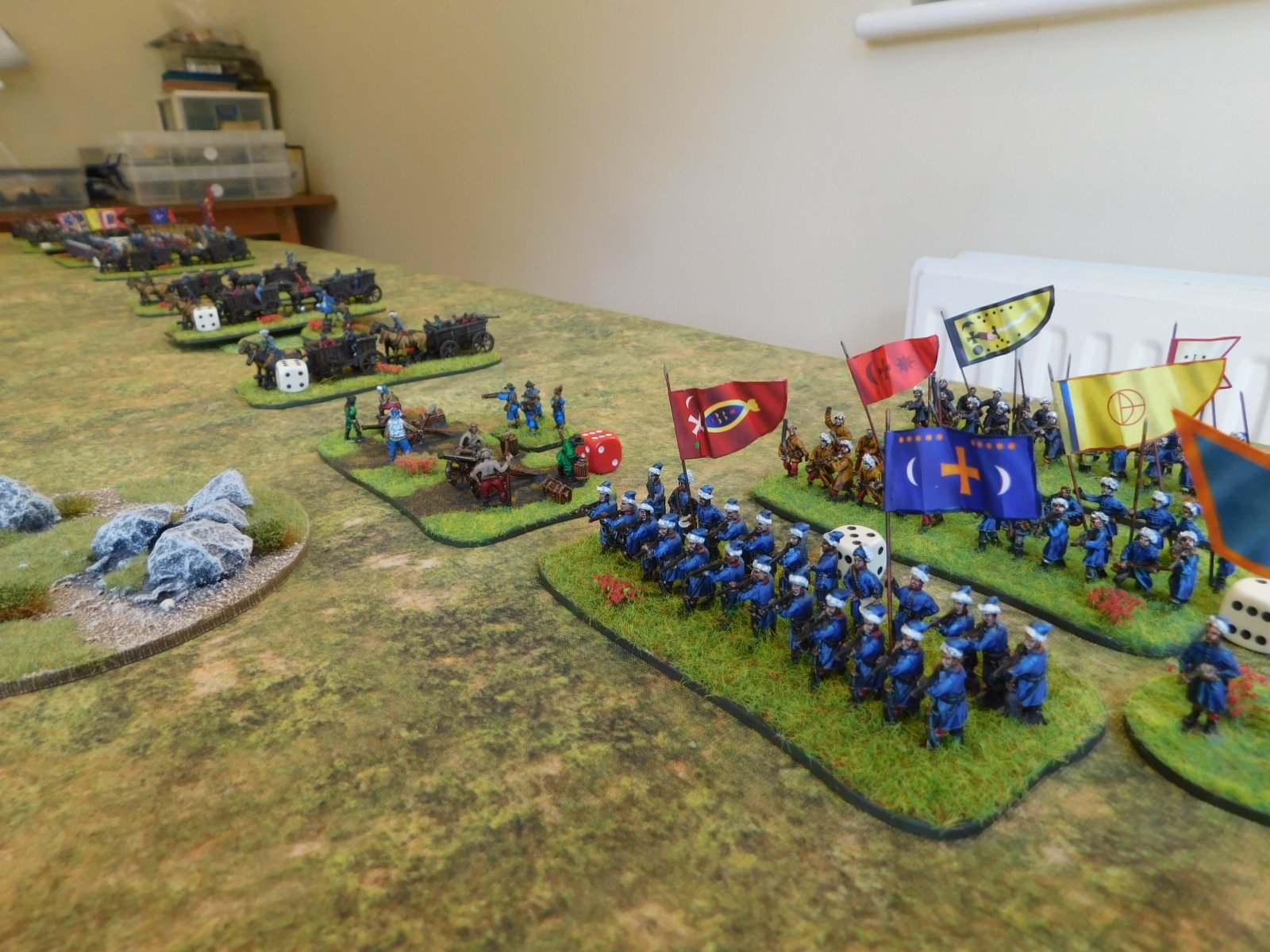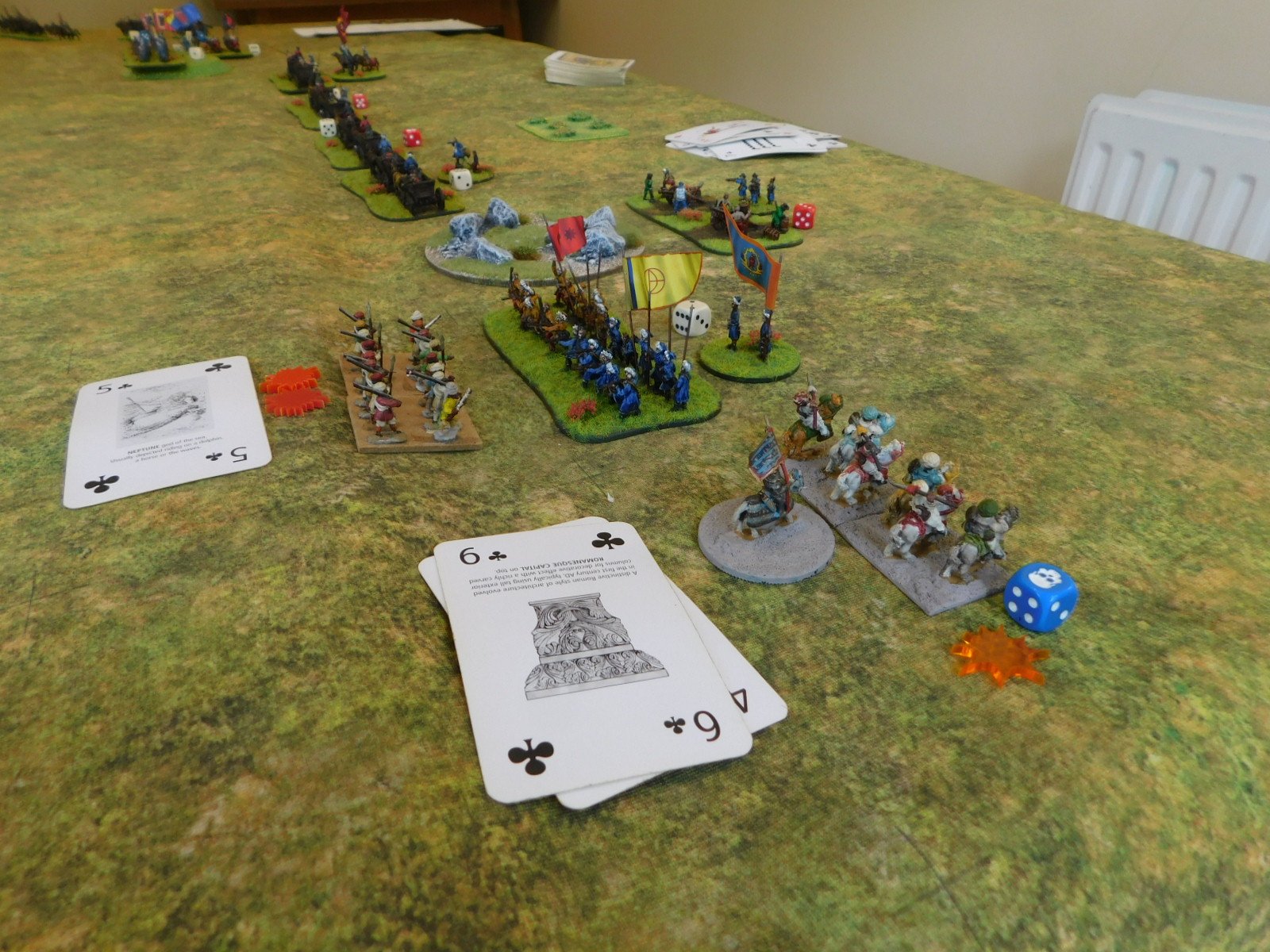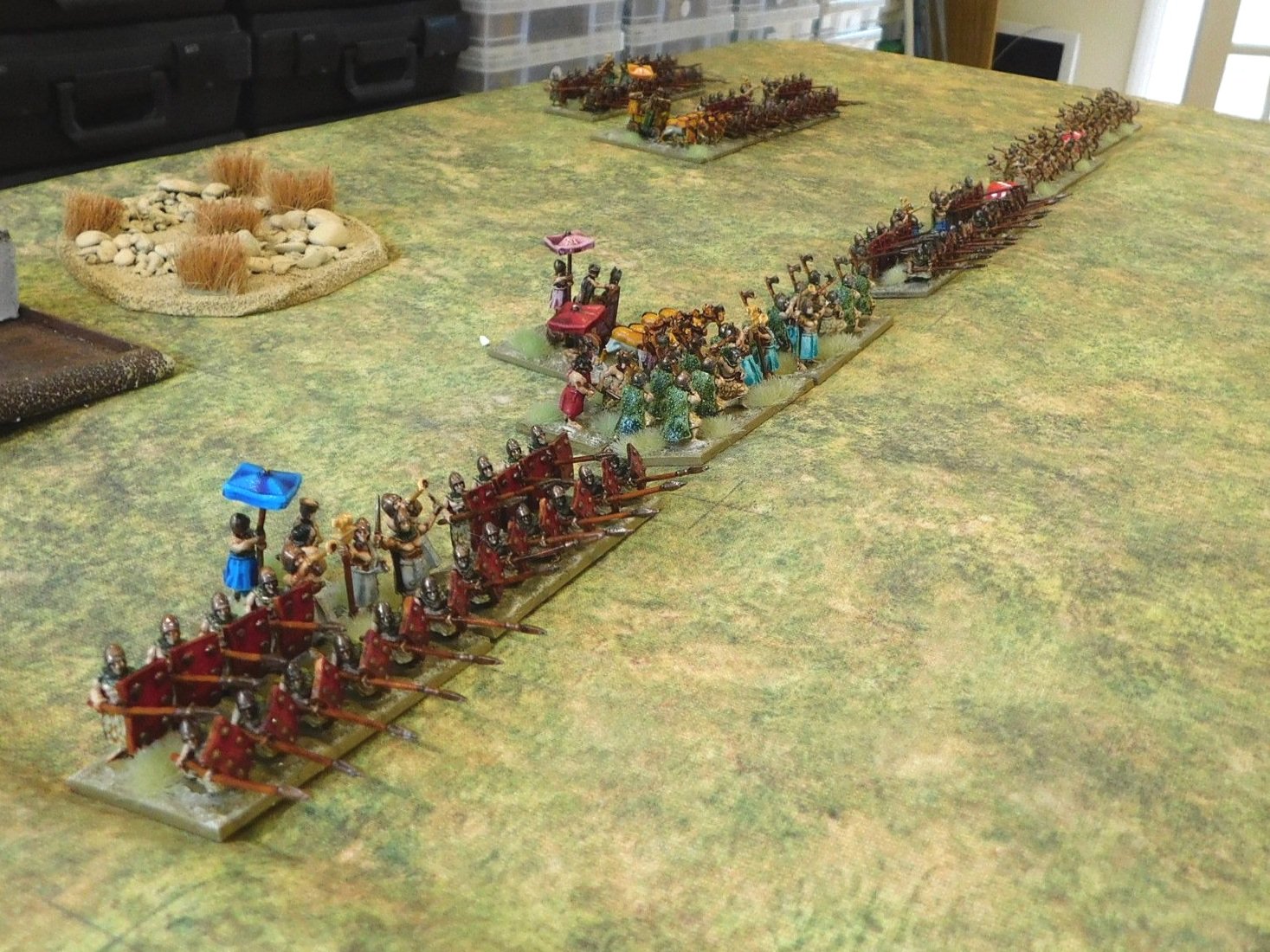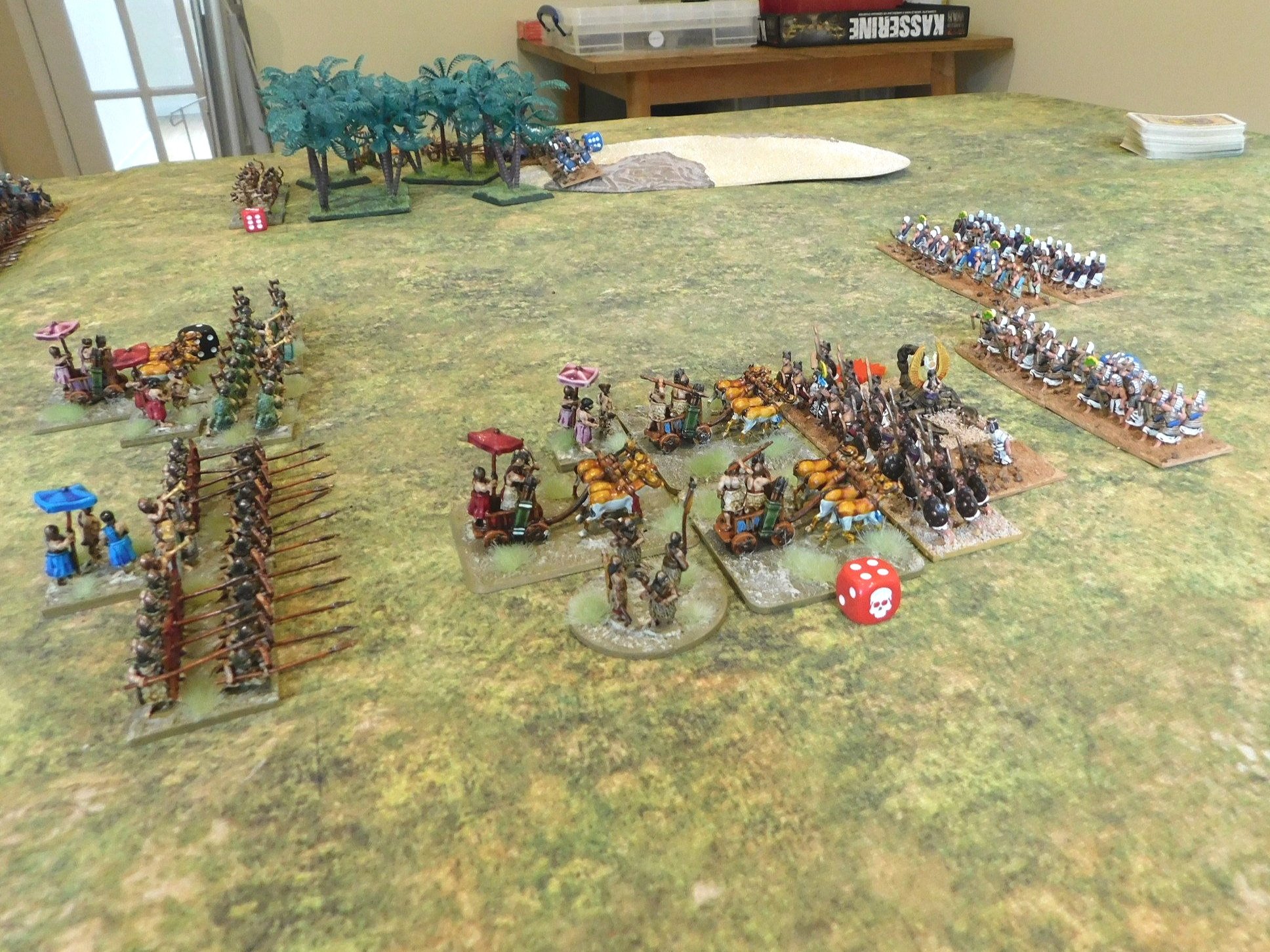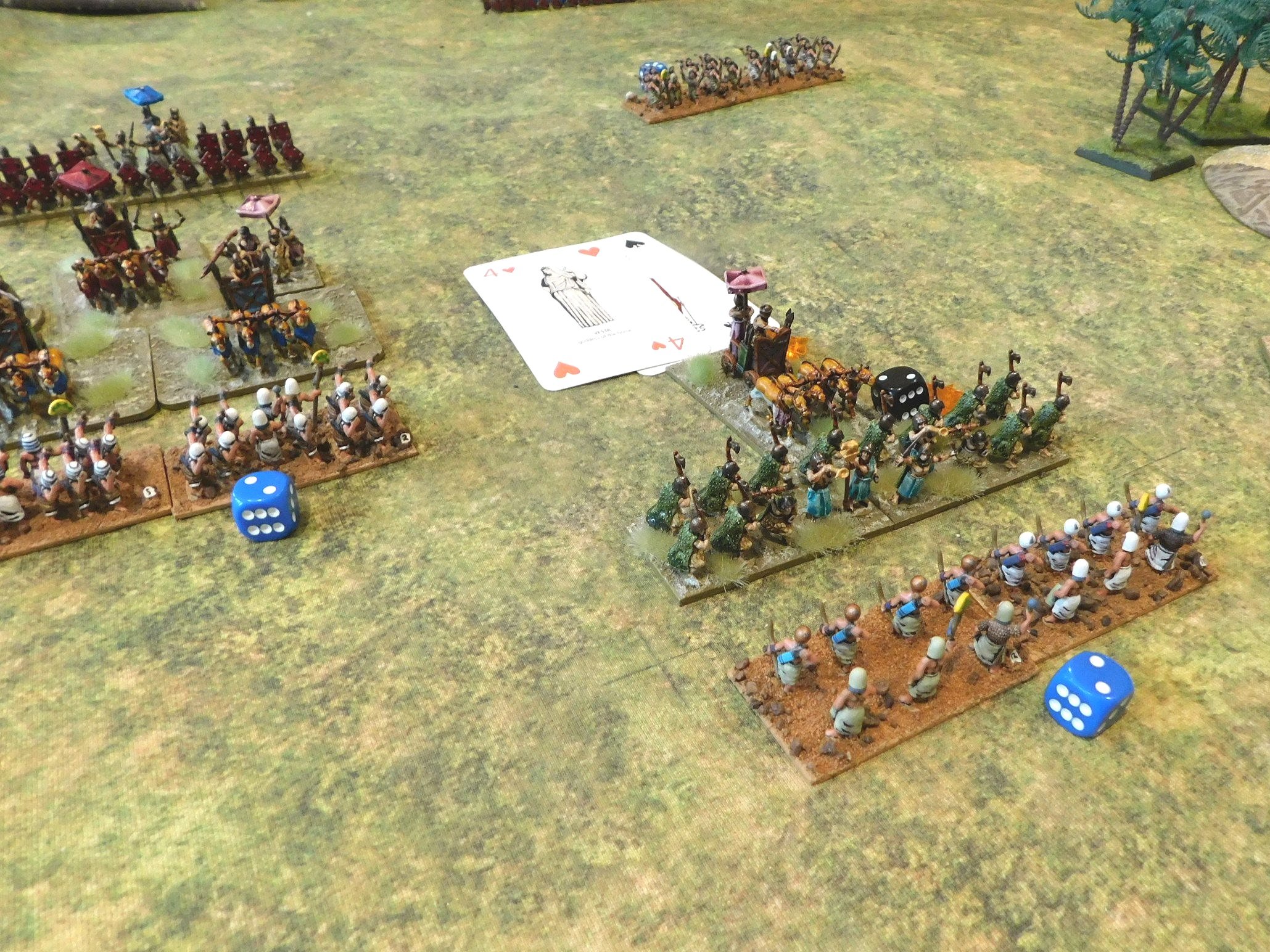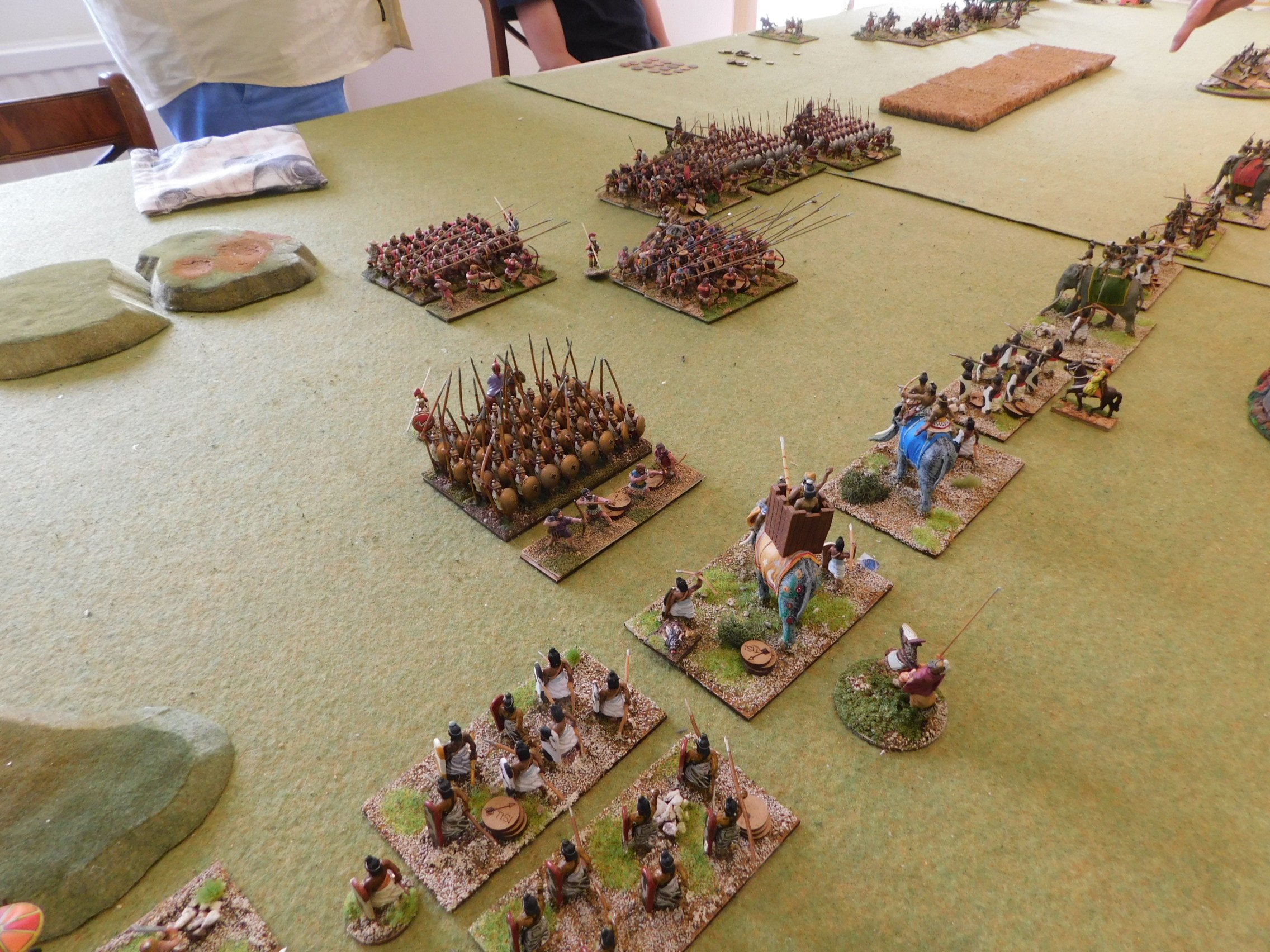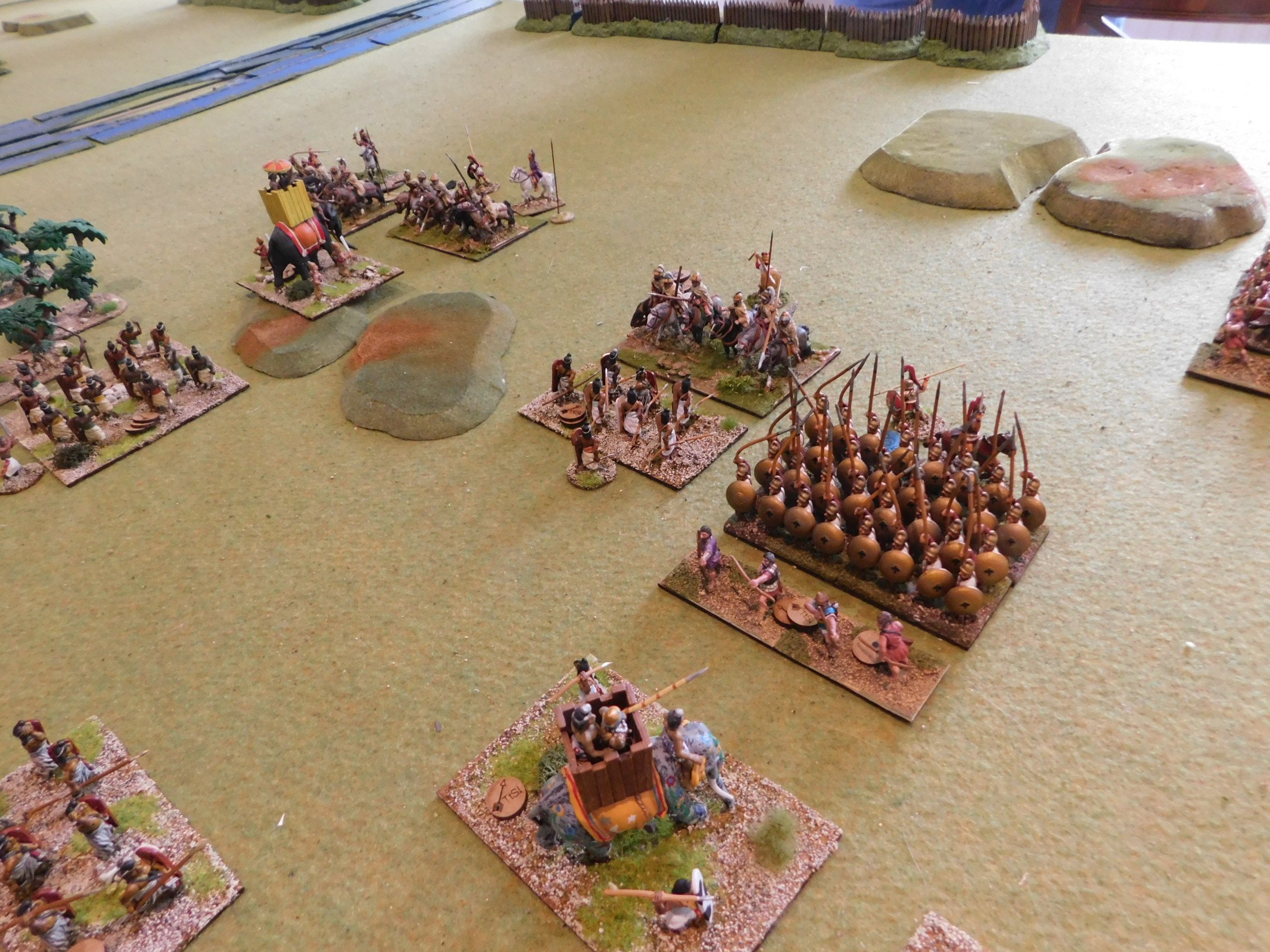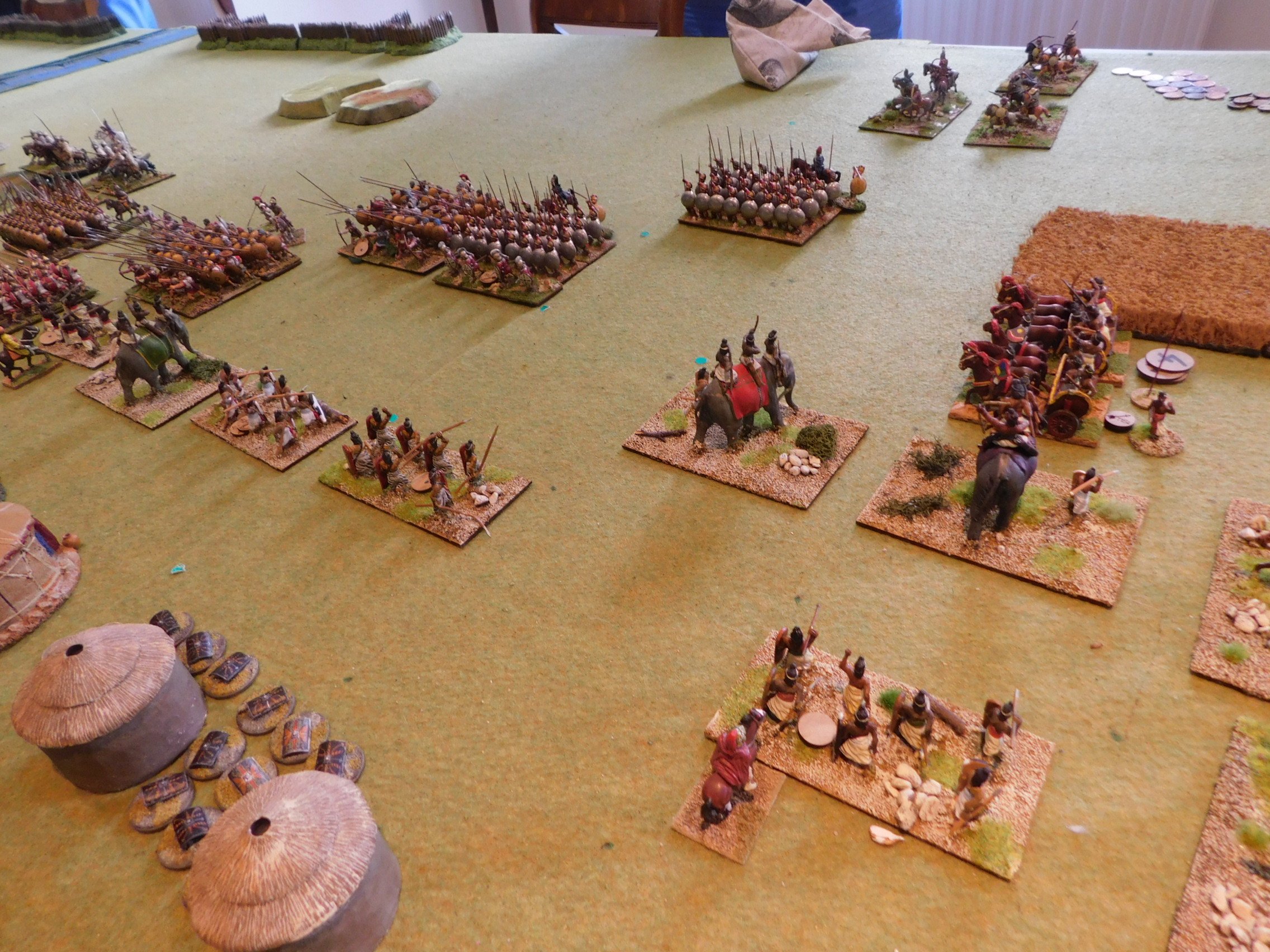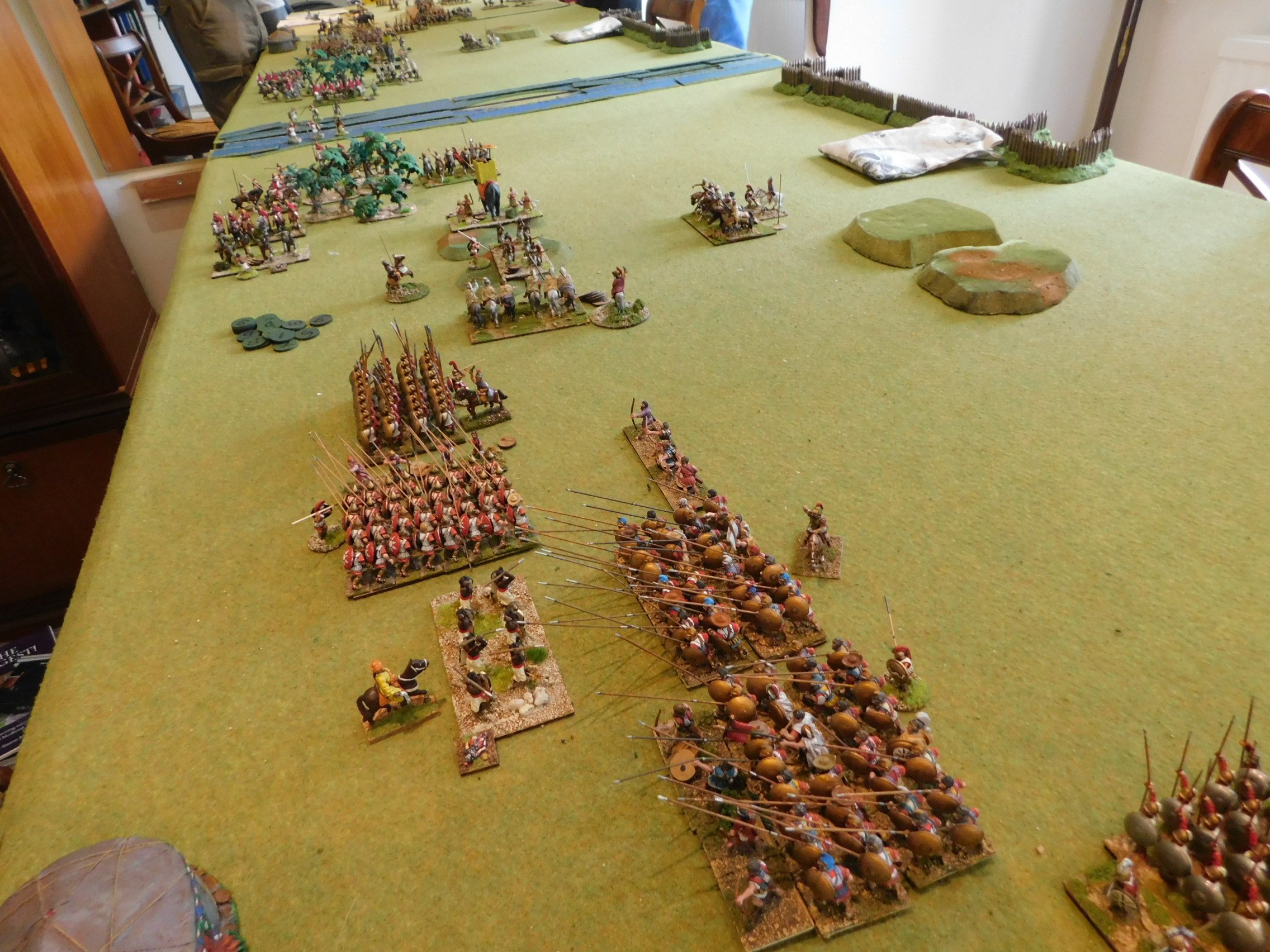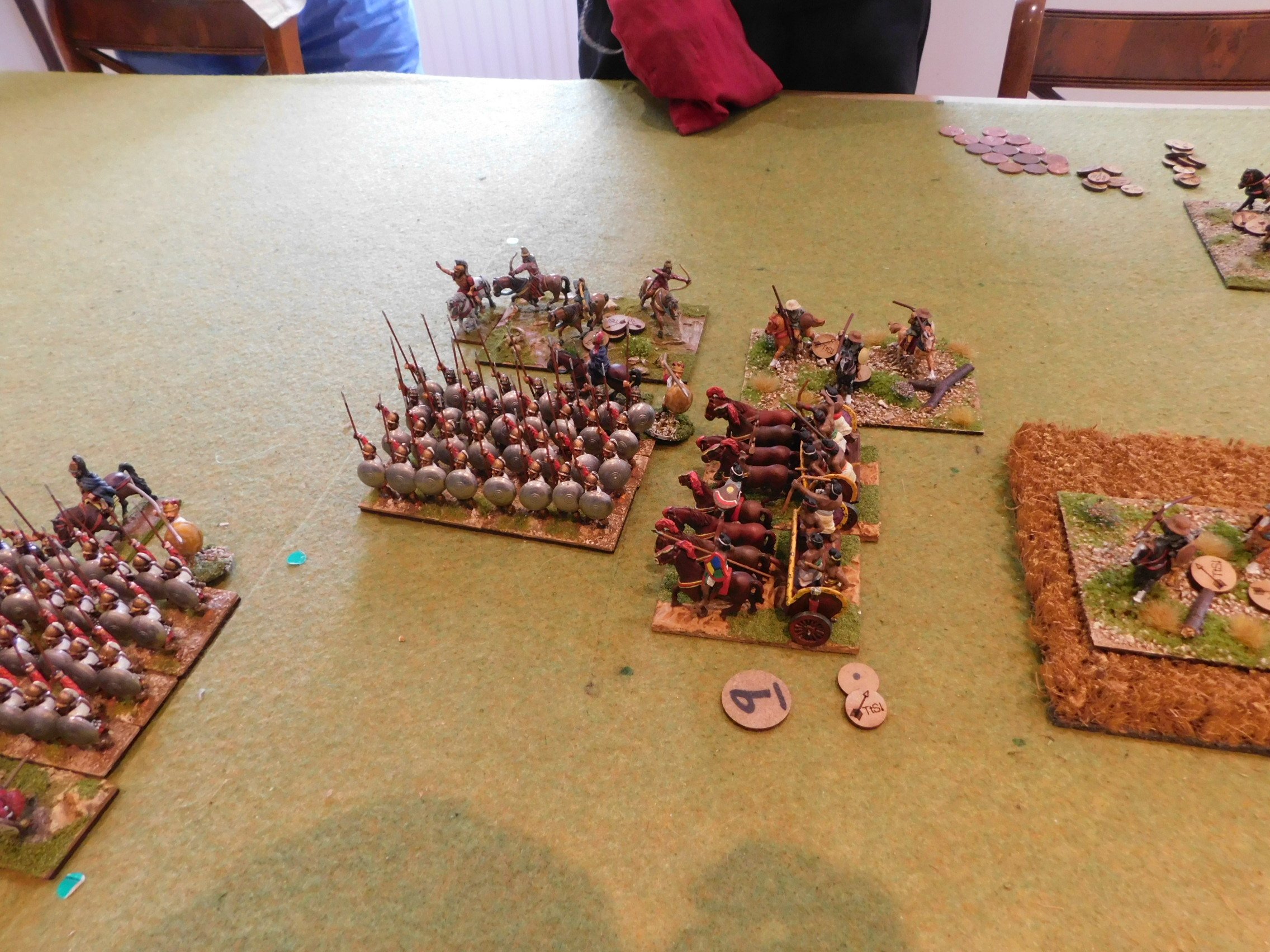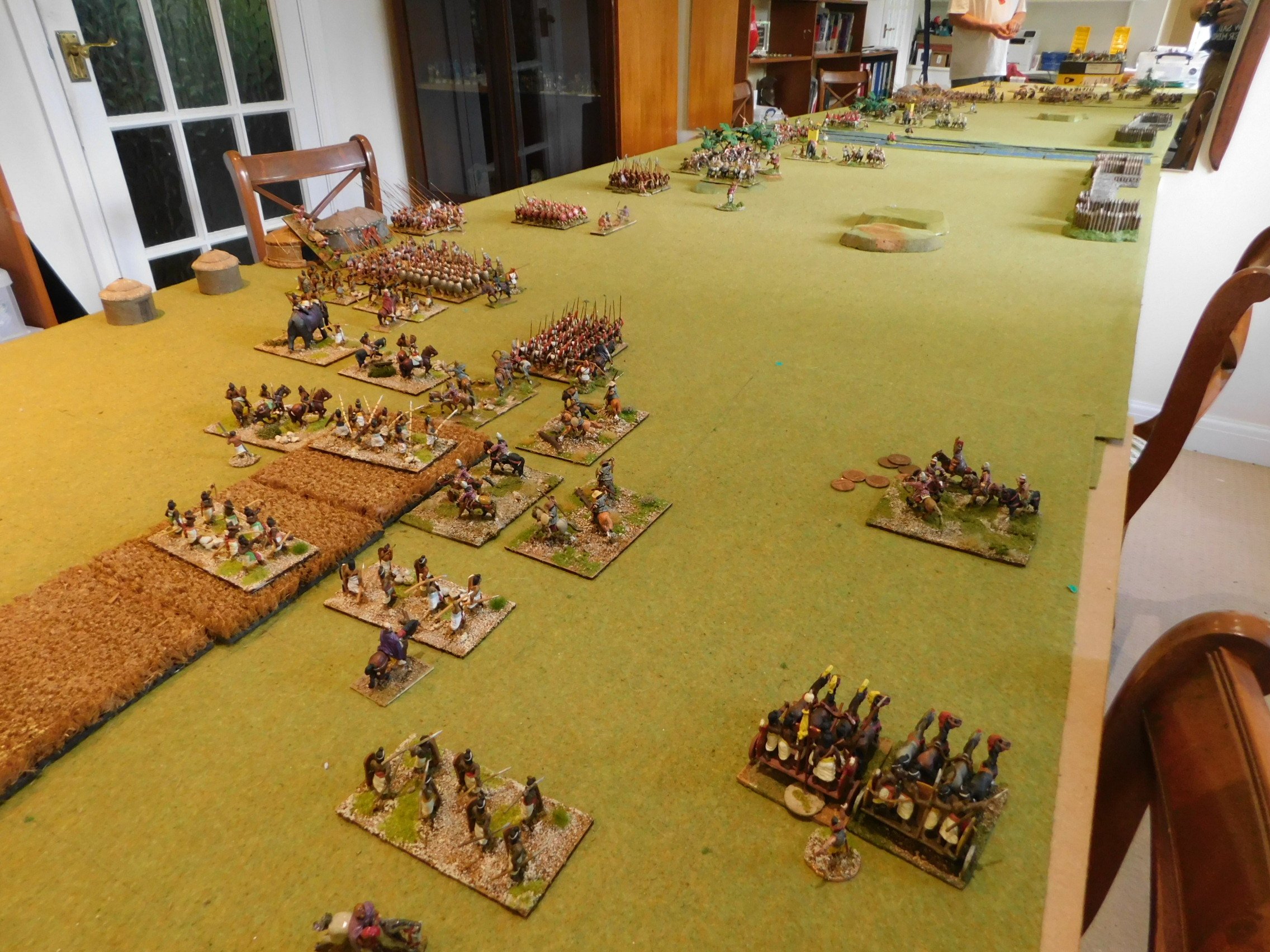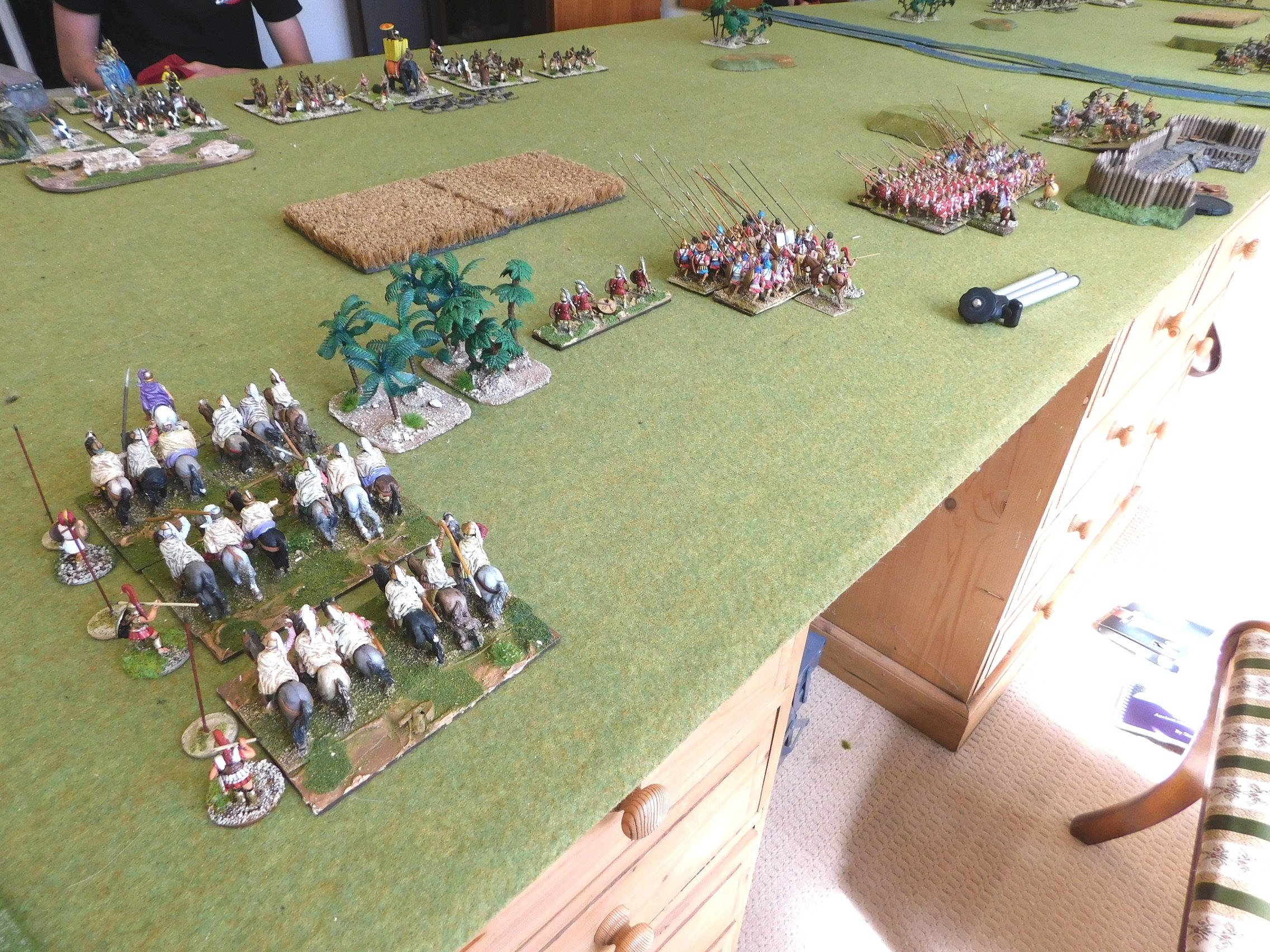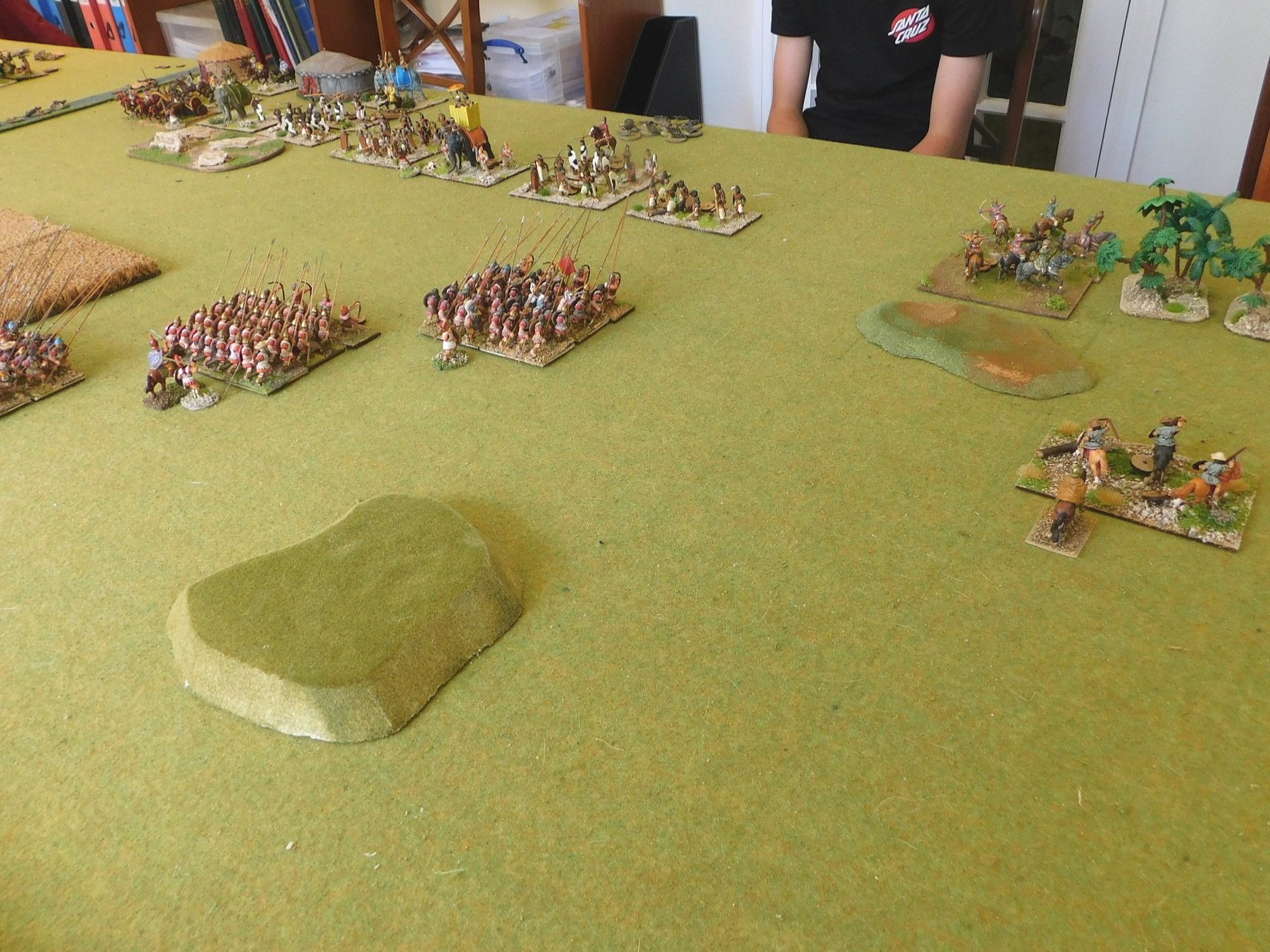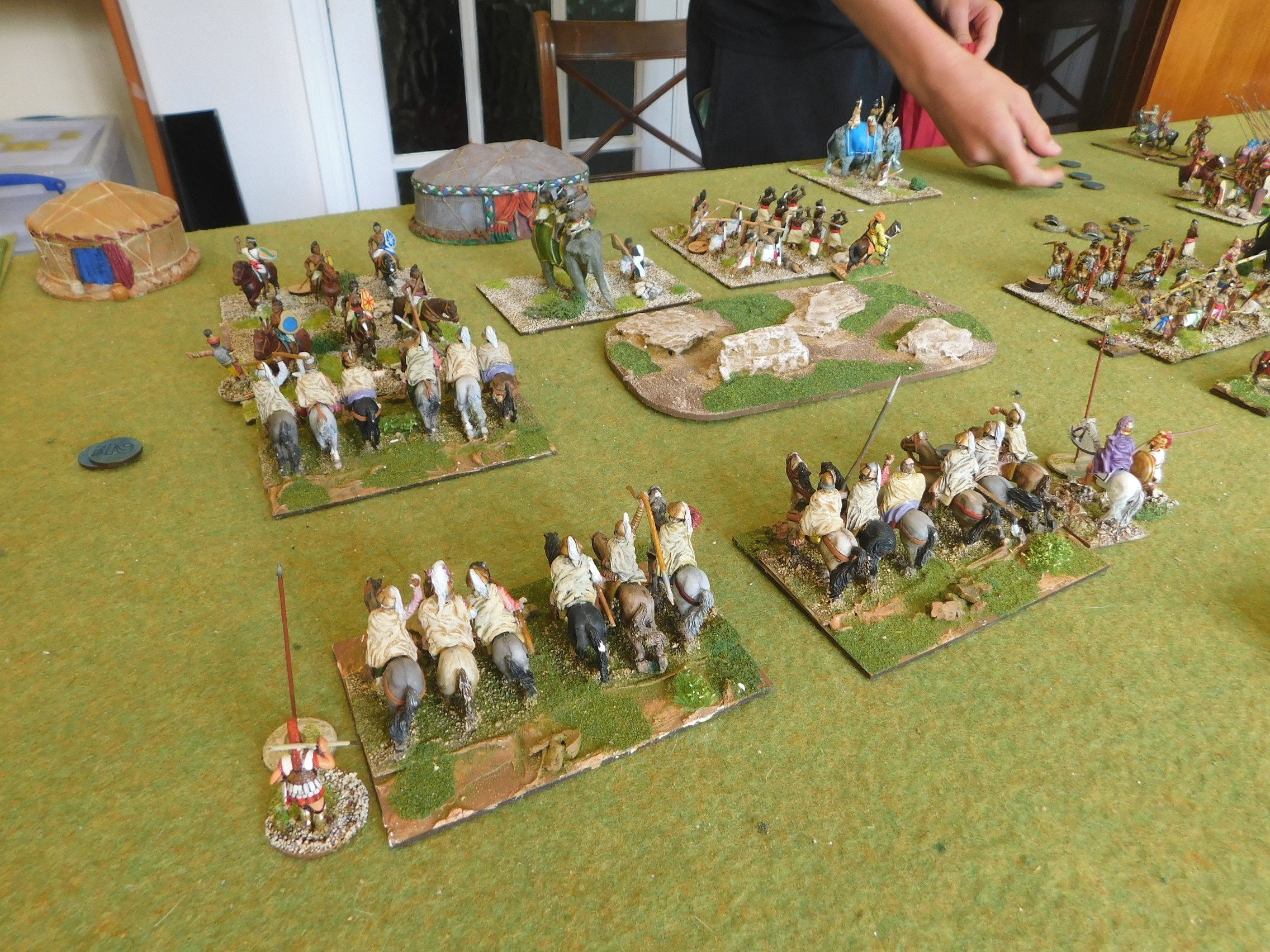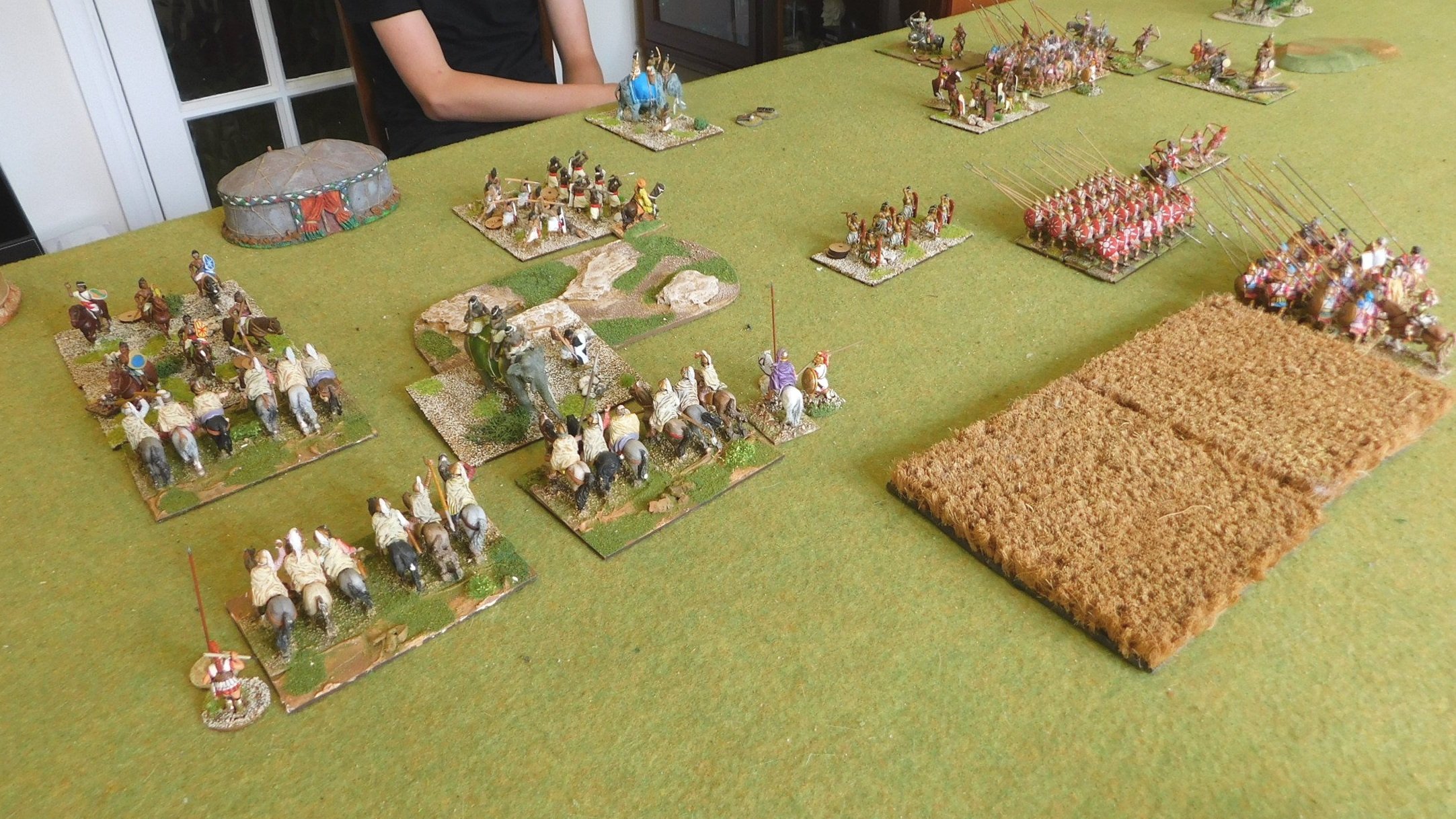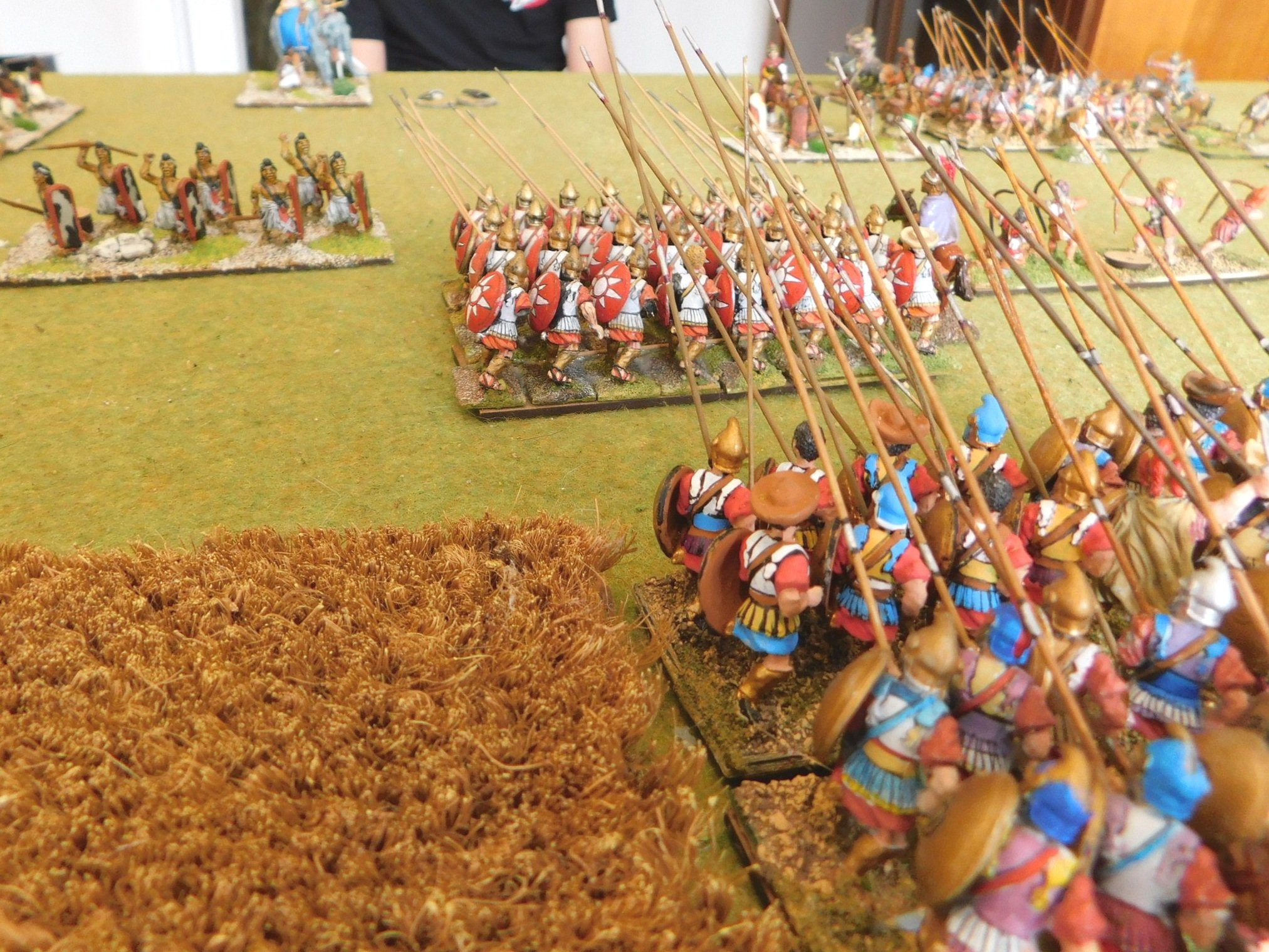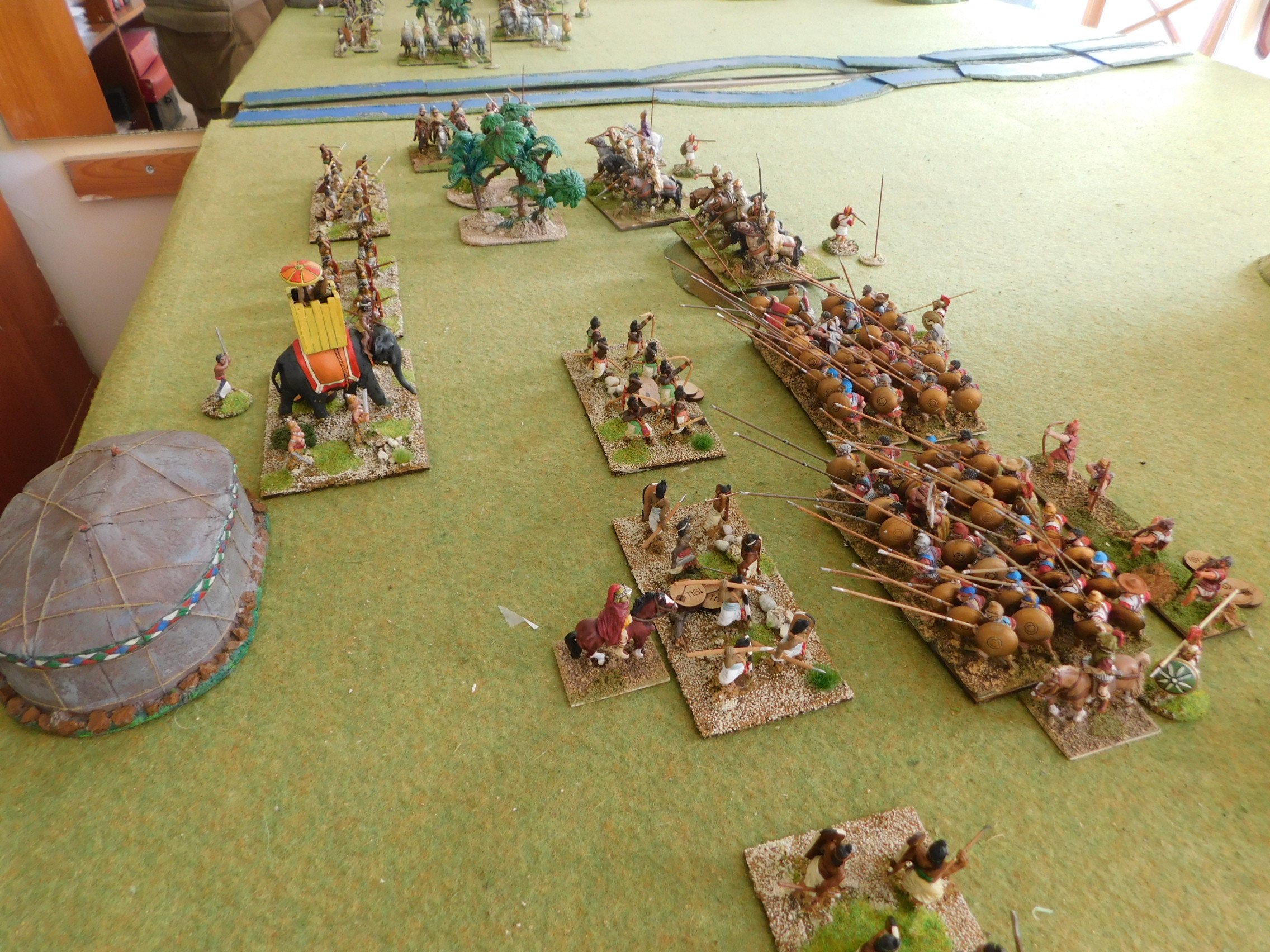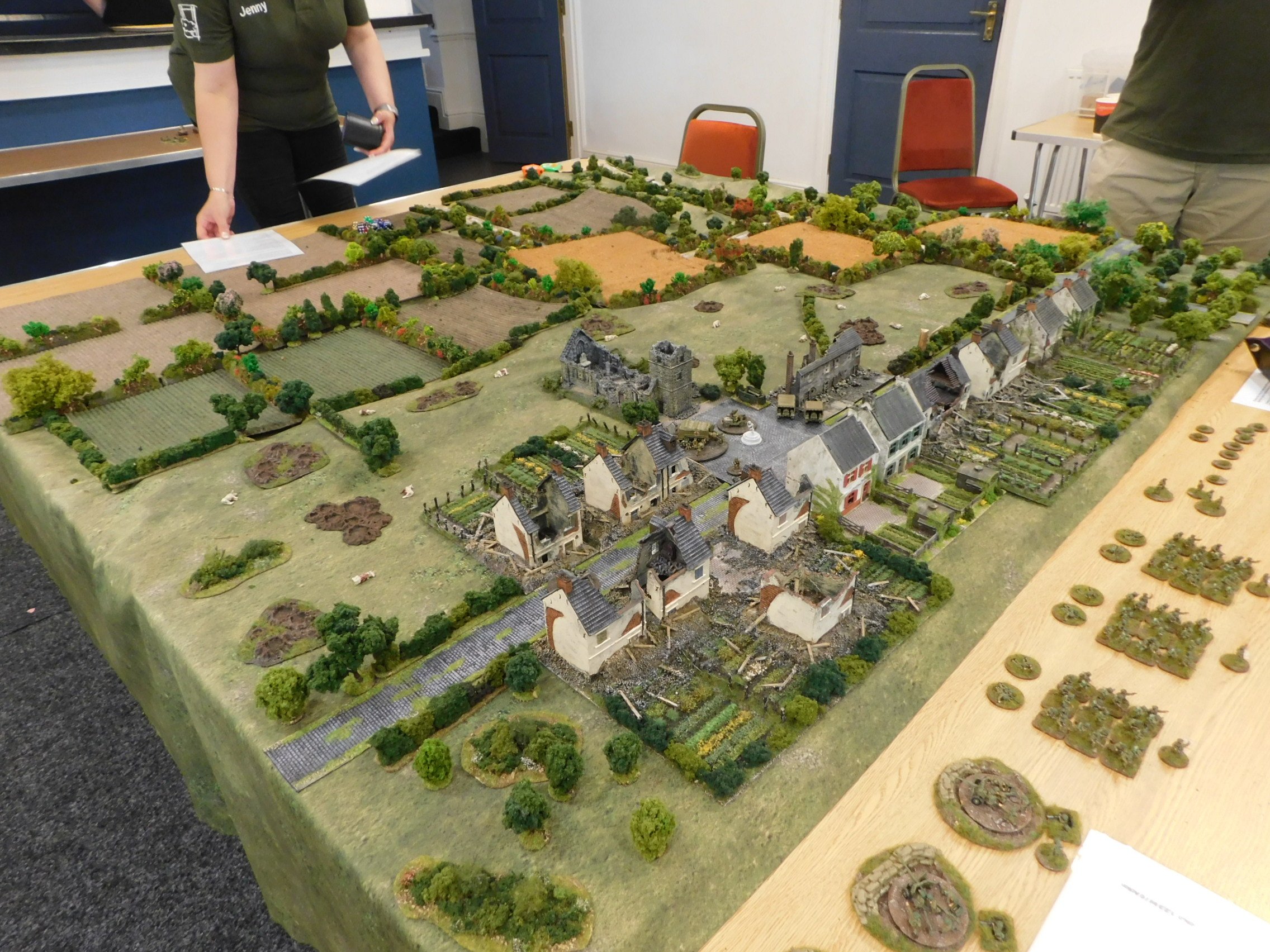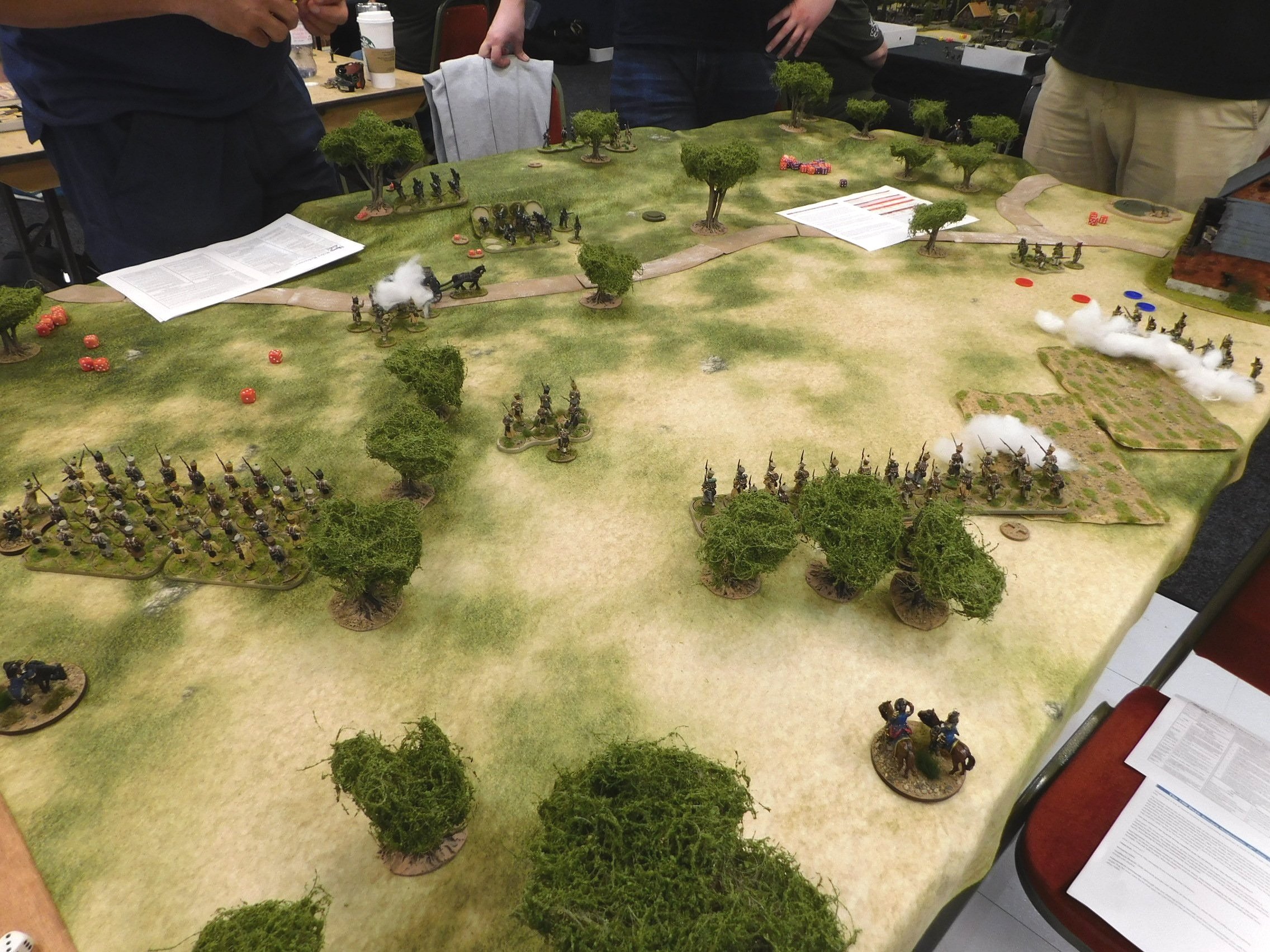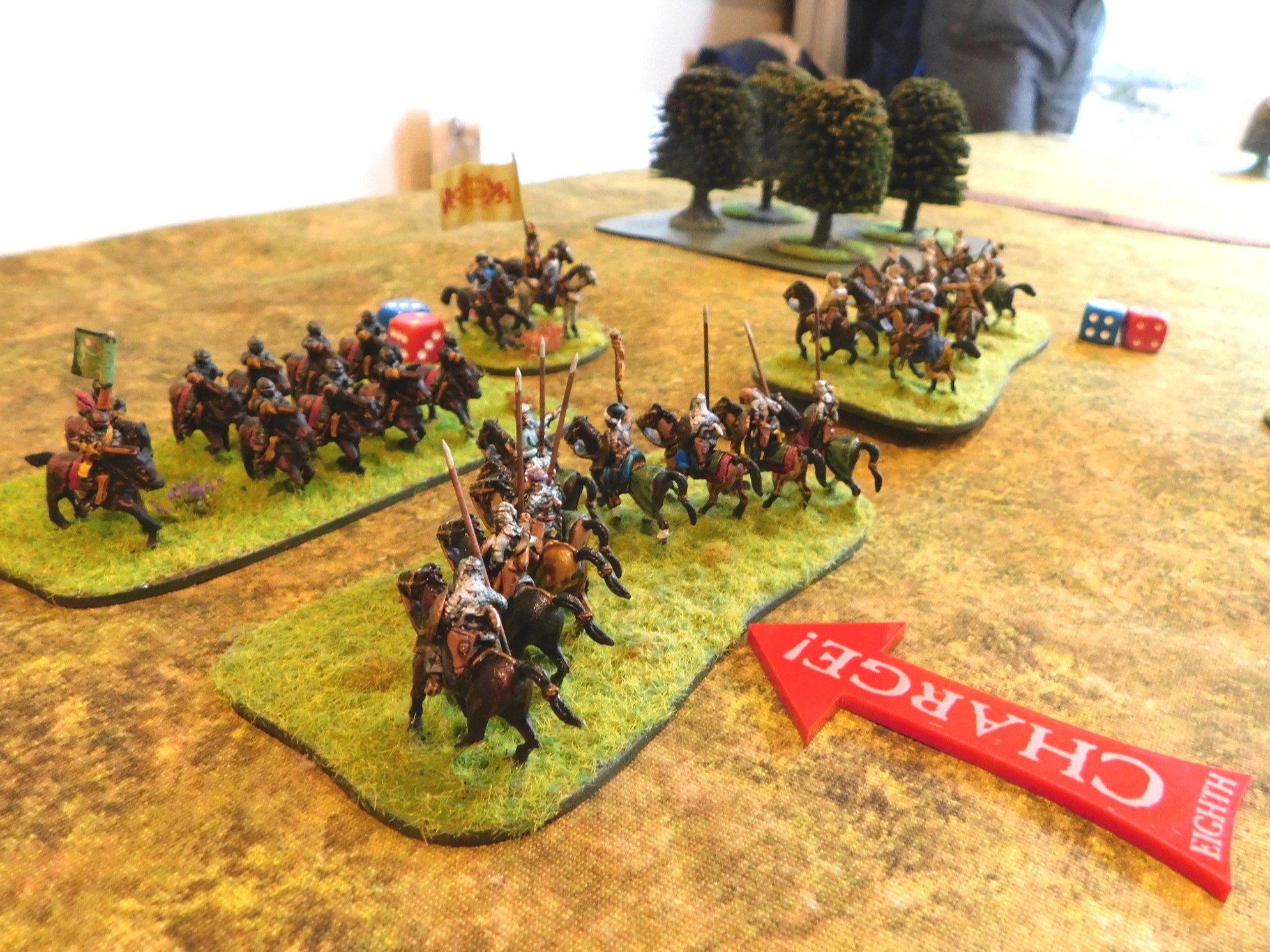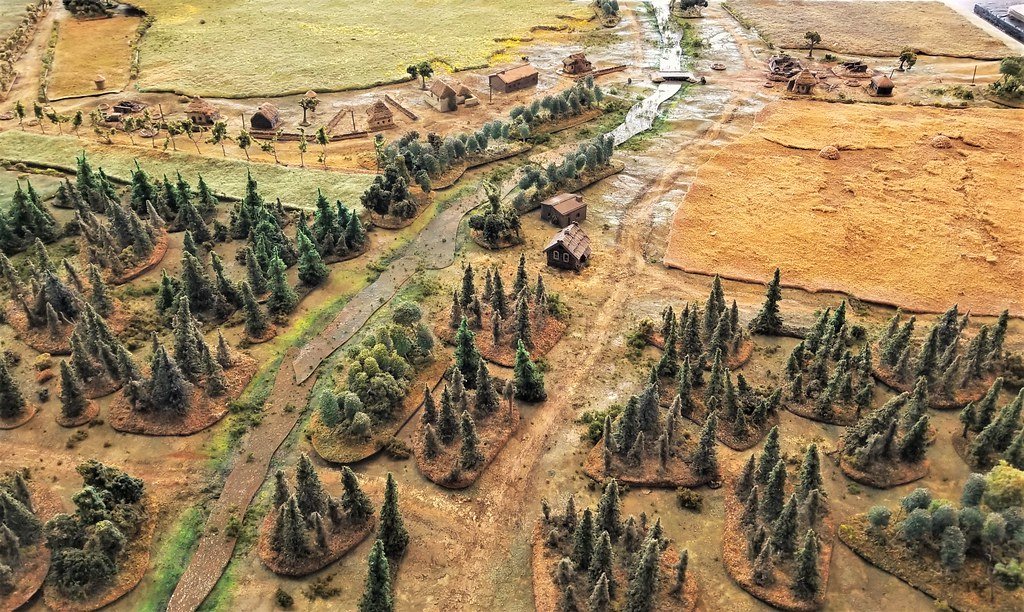TTS AAR: Gauls versus Sassanids
/Having re-based all my Sassanids, I couldn’t wait to get them onto the tabletop…and fortunately friend Bevan was available to help me do so.
The real question was who to pitch them against: the Sassanids are one of the most successful armies under the To The Strongest system: the combination of horse archers and chunky lancers giving everyone except a similar army real problems. I eventually decided upon the Gauls as suitable opponents: lots of big warbands that could soak up damage, not as fragile as the Ancient Brits, and with some decent cavalry of their own. Chuck in some Gaeseti fanatics, and on paper it looked like it might be a good match.
On paper.
Despite the fact that I had re-based the Sassanids, I elected to take the Gauls first time round. Outscouted, I decided to put all my cavalry on one wing: probably a mistake as that allowed Bevan to get his elephants opposite my horse…and if there’s one thing Gallic horse don’t like, it’s the look and smell of nellies!
The Sassanids opened proceedings by sprinting up the battlefield towards my line. Most unusually, the elephants shot out in front of the already fast-moving Sassanid line and stomped into the forest that I had thought I might use to protect my flank.
This looked like a good opportunity to me, so I sent a unit of Gaeseti fanatics into the woods to root the pachyderms out. Surely this was a couple of points I could secure before the rest of his line arrived.
Apparently not.
The elephants proved their worth and soon my fanatics were reeling backwards, with my CinC falling heroically in the melee!
Also on the left flank, the first charge of the Gallic cavalry versus the Sassanid cataphracts had taken place. Despite having the initiative, my horse had failed to dent the armoured horsemen at all, and another of my generals died!
Worse, some enemy Clibanarii were working their way down the flank and needed to be dealt with before they got into my rear!
Meanwhile, on the right flank, I had taken possession of the hill in front of my line. My thinking was that I could soak up a bit of horse archer fire, rallying if necessary, and then be uphill when the enemy lancers went in.
This didn’t really work either, as the Sassanid horse archers were having a very good day, and soon my two warbands looked like pincushions…and, you guessed it, I lost a third general!
So thirty minutes into the game, the situation looked like this:
The Gauls look pretty solid, but that’s an illusion. Next turn, the Gaeseti got mullered by the elephants, the lead cavalry unit got smashed off the table by the cataphracts (foreground action in the pic above), and I also lost the unit of cavalry next to the fanatics and one of the warbands on the hill. That, plus the three officers, was it: I was out of victory medals and out of the game!
Horrendous: Bevan had expertly sliced and diced the Gauls and served them for Sassanid tea!









